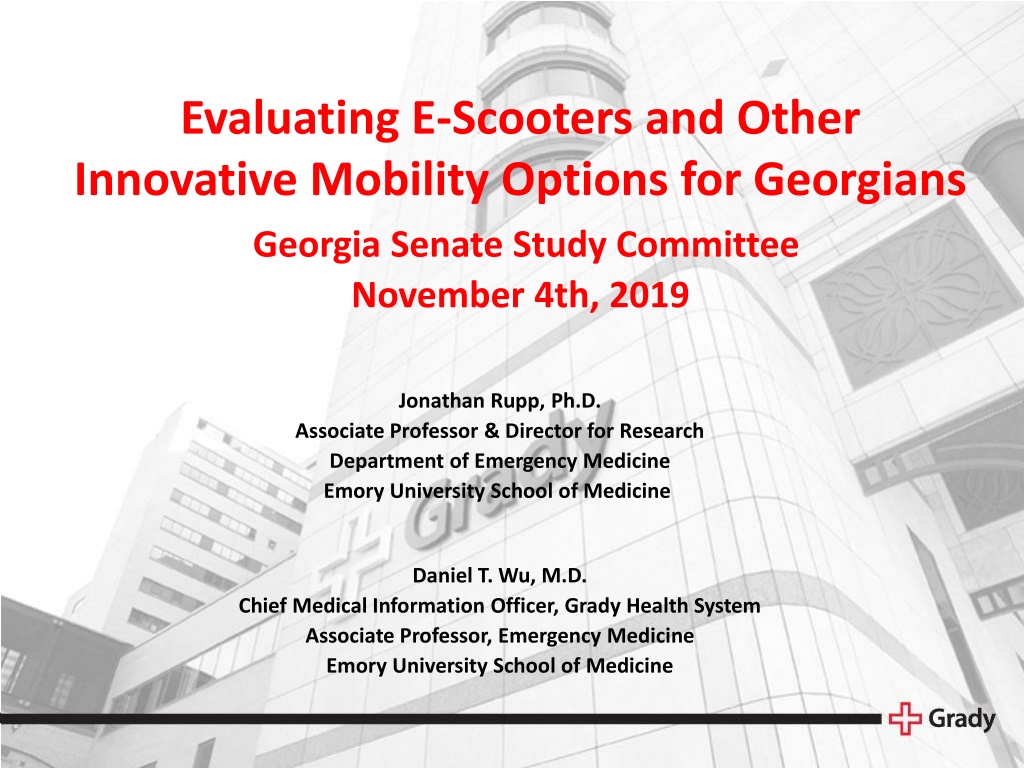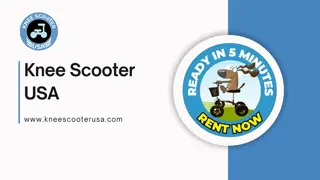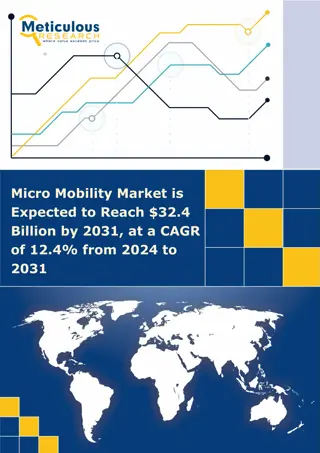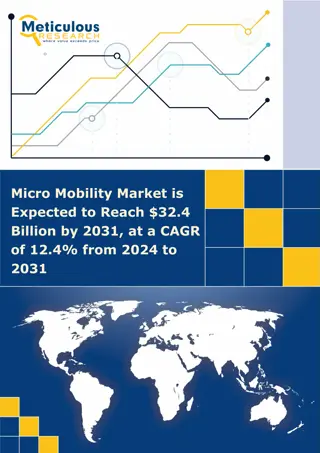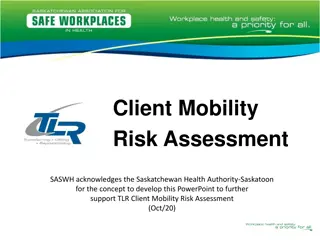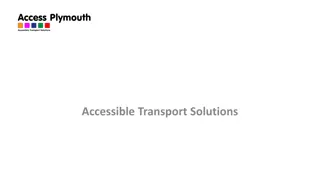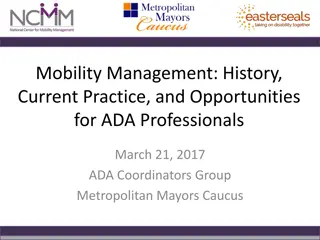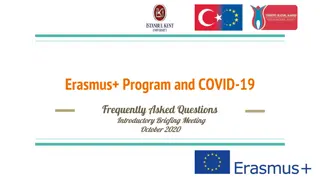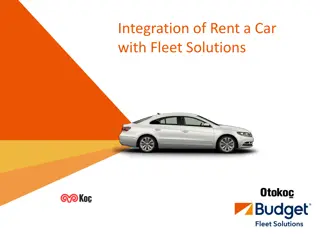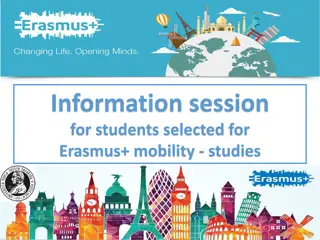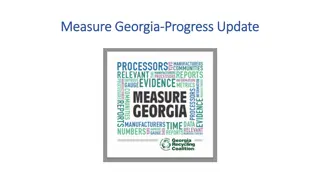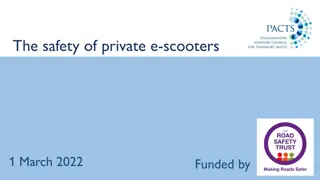Evaluating E-Scooters and Innovative Mobility Options in Georgia
The Georgia Senate Study Committee reviewed the impact of e-scooters and other innovative mobility options on public health, particularly the challenges in identifying and recording injuries. Grady Health System shared initial scooter injury data, highlighting the importance of hospitals in managing these cases effectively. The study also emphasized Grady's significant role as an invaluable healthcare asset in Georgia, providing high-quality care to a large number of patients and training many physicians. Insights on identifying scooter injuries through ICD-10 coding and trauma registry were discussed as part of hospital injury data evaluation.
Uploaded on Sep 20, 2024 | 0 Views
Download Presentation

Please find below an Image/Link to download the presentation.
The content on the website is provided AS IS for your information and personal use only. It may not be sold, licensed, or shared on other websites without obtaining consent from the author. Download presentation by click this link. If you encounter any issues during the download, it is possible that the publisher has removed the file from their server.
E N D
Presentation Transcript
Evaluating E-Scooters and Other Innovative Mobility Options for Georgians Georgia Senate Study Committee November 4th, 2019 Jonathan Rupp, Ph.D. Associate Professor & Director for Research Department of Emergency Medicine Emory University School of Medicine Daniel T. Wu, M.D. Chief Medical Information Officer, Grady Health System Associate Professor, Emergency Medicine Emory University School of Medicine
Objectives Describe how hospitals currently identify and record mechanisms of injuries Describe the challenges specific to identifying electric scooter injuries Share Grady s initial scooter injury data Next steps
Grady: An Invaluable Asset Exclusive 911 and ambulance services for City of Atlanta-Fulton, with expansion to 16 rural counties Georgia Cancer Center for Excellence and Avon Breast Center Industry-leading Marcus Stroke and Neuroscience Center Busiest Level 1 Trauma Center in Georgia ACS Nationally Certified One of the country s largest infectious disease programs State-of-the-art Correll Cardiac Center Nationally acclaimed burn center 1 of only 2 in GA Georgia s only poison control center World s first 24-hr comprehensive sickle-cell center 6 Neighborhood Health Centers in Fulton and DeKalb and Crestview Nursing Facility Hughes Spalding Children s Hospital (operated by CHOA) 3
High Quality Care for All 25% OF ALL GEORGIA PHYSICIANS RECEIVED SOME OF THEIR TRAINING FROM GRADY APPROXIMATELY 700,000 PATIENT VISITS GRADY EMS RESPONDED TO MORE THAN 141,000 911 CALLS 153,000+ PATIENTS TREATED IN THE EMERGENCY DEPARTMENT 300 VOLUNTEERS DEDICATED TO HELPING PATIENTS AND FAMILIES 6 GRADY NEIGHBORHOOD HEALTH CENTERS GRADY IS THE LARGEST HOSPITAL IN GEORGIA WITH 654 STAFFED BEDS MORE THAN 7,000 EMPLOYEES 4
Hospital Injury Data - How do we identify Scooter injuries? Ways to identify patients with scooter related injuries ICD 10 coding Numerous non-specific codes for scooters Most commonly V-codes (mechanism), often unbillable Trauma Registry Skewed towards seriously injured cases (admissions) Chart Reviews The term Scooter is not defined or used consistently
Challenges - What are we looking for? Non powered Scooter Motorized Scooter Segway Scooter Mobility Scooter
Challenges - What's in a Name? Scooter Electric Scooter Standing Scooter Dockless Scooter Motorized Scooter Micro-Mobility Scooter Brand name (Bird/Lime/Lyft/Jump/ Bolt/Boaz/Wheels/Spin /Gotcha)
Atlanta Timeline Nine Companies Lyft 12/21/2018 Uber 12/19/2018 11,650 Permits 6/26/2019 Lime 6/25/2018 Bird 5/1/2018
Our Approach Created SCRATCH injury registry (Scooter CRash And Trauma CoHort) Searched all ED notes from June 2018 Sept 2019 for key words (i.e. scooter, eScooter, company name, etc.) Manual chart review to confirm case involved a standup electric scooter
Numbers of Injuries per Month 80 Possible (n=209) Certain (n=402) 70 60 50 40 30 20 10 0 Jun Jul Aug Sep Oct Nov Dec Jan Feb Mar Apr May Jun Jul Aug Sep 2018 2019
Age Distribution by Sex Age Distribution, Confirmed e-Scooters 30% Female (n=131) 25% Male (n=271) 20% 15% 10% 5% 0% 15-19 20-24 25-29 30-34 35-39 40-44 45-49 50-54 55-59 60-64 65-70 Age Group (years) 70+
Final Disposition Patient Disposition Admitted (n=78, 19%) Discharged Home (n=322, 80%) Died (n=2, 1%)
Additional Findings Built environment commonly noted (>15%) Mechanical issues (~3%) 17% Motor Vehicle Collision Helmets rarely used ETOH common (30% of 141 pts tested had EtOH 0.08 g/dL)
Additional Findings, continued Most common chief complaints (69 total over 402 patients): Fall (29%), Motor cycle crash (15%), Trauma (10%), Motor-vehicle crash (4%)
Financial Distribution PAYER MIX BY CHARGE FOR ALL CERTAIN AND POSSIBLE E-SCOOTER INJURIES Median Charge for all possible and certain cases: $8,060 Self-pay, 36% Commercial, 42% Medicare, 7%, Medicaid, 14%
Injury Patterns (Subset analysis) 44% of patients had head injuries (included face) 37% had lower extremity injuries Severe ankle injuries most common (10/12) Of UE injuries, distal are more common than proximal
Admitted patients Trauma Registry (Subset analysis) 19 admitted Avg Injury Severity Score (ISS) 6, high of 14 2 ICU admits Avg hospitalization 4 days, high 13 All discharged to home except 1 (SNF)
How to complete the picture Hospital data will identify the most severe injuries Urgent Care Centers Student Health Centers at local Universities Robust rider feedback
Next Steps In-Depth analysis of SCRATCH data Engage patients prospectively for better data collection (obtain accident related factors like helmet use, ETOH, built environment) Identify and implement injury prevention interventions
Questions? Daniel Wu, M.D. dtwu@emory.edu Jonathan Rupp, Ph.D. jrupp2@emory.edu
